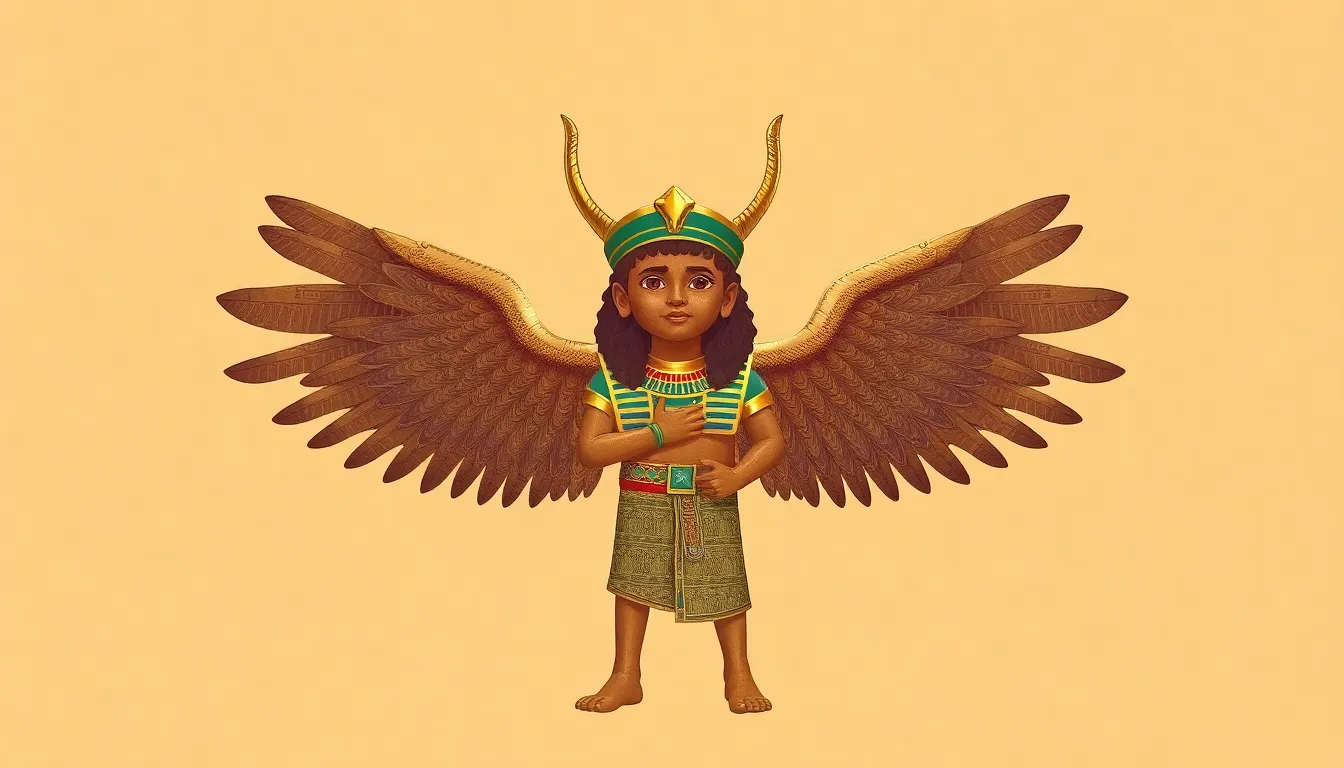The Myth of the Divine Child: Horus and His Legacy
I. Introduction
The concept of the Divine Child is a powerful archetype found in various mythologies around the world. It often embodies themes of rebirth, hope, and the potential for greatness. In Egyptian mythology, one of the most prominent representations of this archetype is Horus, the falcon-headed god who is deeply revered as a symbol of kingship and protection.
This article aims to explore the legacy of Horus, examining his origins, attributes, and the enduring influence he has had on later myths and cultures. By understanding Horus’s story, we gain insight into the values and beliefs of ancient Egyptian society and their impact on subsequent traditions.
II. The Origin of Horus: Birth and Early Life
The mythological background of Horus is intricately tied to the tragic tale of his parents, Isis and Osiris. According to the myth, Osiris, the god of the afterlife, was murdered by his jealous brother Set, who sought to usurp his throne. In her grief, Isis searched tirelessly for Osiris’s body, eventually finding it and using her magical powers to conceive Horus.
Horus’s birth is significant in Egyptian culture as it symbolizes resurrection and the divine right to rule. Born in secrecy to protect him from Set, Horus represents hope and the continuity of life after death.
The symbolism of the Divine Child archetype is evident in Horus’s narrative, where he embodies the potential for renewal and the restoration of order in a chaotic world.
III. Attributes and Symbols of Horus
Horus is often depicted as a falcon-headed man, symbolizing both the sky and the divine. His most recognizable symbol, the Eye of Horus, represents protection, royal power, and good health. This iconography highlights his role as a guardian deity, watching over the pharaohs and the land of Egypt.
- Iconography: Falcon-headed god, the Eye of Horus
- Associations: Kingship, protection, and the divine right to rule
- Role in the afterlife: Horus is also associated with resurrection, serving as a guide for souls in the afterlife.
IV. Horus in the Mythological Narrative
The myth of Horus is characterized by his struggle against Set, which embodies themes of conflict, restoration, and the quest for justice. After growing to adulthood, Horus sought to avenge his father Osiris and reclaim his rightful place as ruler of Egypt.
Horus’s battles with Set were not merely physical; they were symbolic of the eternal struggle between order and chaos. His victory over Set not only restored balance to the cosmos but also established him as the protector of the throne, uniting Upper and Lower Egypt.
The significance of the Horus and Set myth lies in its reflection of Egyptian beliefs about governance, justice, and the cyclical nature of life.
V. Horus’s Influence on Later Cultures
The legacy of Horus extends far beyond ancient Egypt, influencing numerous cultures and mythologies. Parallels can be drawn between Horus and other Divine Child figures, such as:
- Christ in Christianity, who is often viewed as a savior and redeemer.
- Mithras in Roman mythology, associated with rebirth and light.
- Krishna in Hinduism, known for his divine childhood and heroic deeds.
Horus’s impact is also evident in Greco-Roman traditions, where his image and attributes were adapted and integrated into various religious practices. The narrative of Horus has been adopted in contemporary religions, reflecting the timeless nature of his story.
VI. The Psychological Interpretation of the Divine Child
Carl Jung’s theory of archetypes helps explain the continued relevance of the Divine Child motif. Jung posited that the Divine Child represents the innate potential for growth, creativity, and renewal within each individual.
Horus exemplifies this archetype as a figure of hope and transformation. His journey from a vulnerable infant to a powerful deity mirrors the human experience of overcoming adversity and achieving personal growth.
In modern psychology, the Divine Child motif serves as a reminder of the importance of nurturing one’s inner potential and embracing the cyclical nature of life.
VII. The Legacy of Horus in Modern Culture
The legacy of Horus resonates in contemporary culture, where he is frequently represented in literature, art, and popular media. His image can be found in:
- Literature: Various novels and stories draw upon his mythological attributes.
- Films: Movies exploring Egyptian mythology often feature Horus as a central character.
- Video games: Horus appears in numerous games that explore ancient themes and mythologies.
This ongoing fascination with Horus reflects humanity’s enduring quest for meaning and understanding of the divine.
VIII. Conclusion
Horus stands as a significant figure in mythology, embodying the qualities of the Divine Child. His story encapsulates themes of resurrection, protection, and the rightful claim to power. The enduring legacy of Horus is evident in both ancient traditions and modern interpretations, making him a timeless symbol of hope and renewal.
As we reflect on the relevance of myth in understanding human experience and culture, it becomes clear that the story of Horus continues to inspire and resonate, reminding us of our own potential for growth and transformation.




